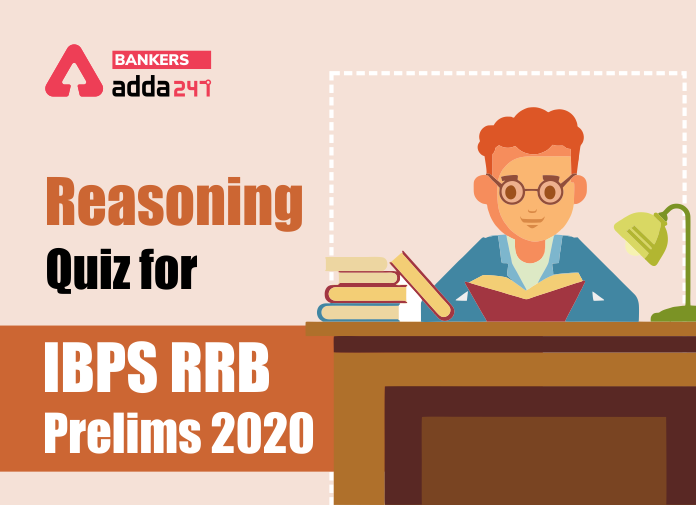Table of Contents
Direction (1-5): In these questions, relationship between different elements is show in the statements. The statements are followed by conclusions. Study the conclusions based on the given statements and select the appropriate answer:
(a) If only conclusion I follows.
(b) If only conclusion II follows.
(c) If either conclusion I or II follows
(d) If neither conclusion I nor II follows.
(e) If both conclusions I and II follow.
Q1. Statements: W≤R<T≥ S>X> B>F<K=M
Conclusion: I: F ≤ T II: T > F
Q2. Statements: R≥P≥D=W≤Z= A>V=N
Conclusion: I: R ≥ Z II: A > D
Q3. Statements: K=Q>E> G>J>Y≥D≤R<T
Conclusion: I: K > T II: T ≤ K
Q4. Statements: I>P≤ Y≥T=M≥ W≥X<C=D
Conclusion: I: Y > X II: X=Y
Q5. Statements: P<Q≤X=B≤ E=T>Y=U<L
Conclusion: I: U < X II: X ≤ U
Direction (6-10): In these questions, relationship between different elements is show in the statements. The statements are followed by conclusions. Study the conclusions based on the given statements and select the appropriate answer:
(a) If only conclusion I follows.
(b) If only conclusion II follows.
(c) If either conclusion I or II follows
(d) If neither conclusion I nor II follows.
(e) If both conclusions I and II follow.
Q6. Statements: A>E<P≤V<D=W>T≥O>Q
Conclusion: I: Q ≤ D II: W > E
Q7. Statements: Q<J≤O< D≤R>W=U>P
Conclusion: I: R > Q II: D > U
Q8. Statements: Y=O≥E=W≥P<S≤G
Conclusion: I: S > O II: P ≤ Y
Q9. Statements: H<T= R≤ X<V>Z≥S
Conclusion: I: Z > T II: T ≥ Z
Q10. Statements: M≤ L=V=G>F=W<T≤R
Conclusion: I: L > W II: G ≥ R
Directions (11-15): In this question, relationship between different elements is shown in the statements. The statements are followed by conclusions. Study the conclusions based on the given statement and select the appropriate answer.
(a) If only conclusion I follows.
(b) If only conclusion II follows.
(c) If either conclusion I or II follows
(d) If neither conclusion I nor II follows.
(e) If both conclusions I and II follow.
Q11. Statements: P>Q>R=U, U≥T<S, T≥W
Conclusions: I. R > W II. U = W
Q12. Statements: P>Q>R<U, U≥V>S, V<W
Conclusions: I. P > S II. P < S
Q13. Statements: A=K>X<L>N≤R, Q≥A, N=M
Conclusions: I. Q > X II. K > M
Q14. Statements: J=K>X<L>N≤R; Q≥K; J<M
Conclusions: I. Q > X II. X < M
Q15. Statements: J>K>X<L>N≤R; Q≥J<M
Conclusions: I. R < M II. M ≥ R
Solutions
Solutions (1-5):
S1. Ans.(b)
Sol. I: F≤T (False) II: T>F (True)
S2. Ans.(d)
Sol. I: R≥Z (False) II: A>D(False)
S3. Ans.(d)
Sol. I: K>T (False) II: T≤K (False)
S4. Ans.(c)
Sol. I: Y>X (False) II: X=Y (False)
S5. Ans.(c)
Sol. I: U<X (False) II: X≤U (False)
Solutions (6-10):
S6. Ans.(b)
Sol. I: Q≤D(False) II: W>E(True)
S7. Ans.(a)
Sol. I: R>Q (True) II: D>U (False)
S8. Ans.(b)
Sol. I: S>O(False) II: P≤Y(True)
S9. Ans.(c)
Sol. I: Z>T (False) II: T≥Z (False)
S10. Ans.(a)
Sol. I: L>W(True) II: G≥R(False)
Solutions (11-15):
S11. Ans.(c)
Sol. I. R > W (False) II. U = W (False)
S12. Ans.(d)
Sol. I. P > S (False) II. P < S (False)
S13. Ans.(a)
Sol. I. Q > X (True) II. K > M (False)
S14. Ans(e)
Sol. I. Q > X (True) II. X < M (True)
S15. Ans(d)
Sol. I. R < M (False) II. M ≥ R (False)
Download PDF of this Reasoning Quiz for IBPS RRB 2020
Practice with Crash Course and Online Test Series for IBPS RRB PO/Clerk Prelims:




 GA Capsule for SBI Clerk Mains 2025, Dow...
GA Capsule for SBI Clerk Mains 2025, Dow...
 The Hindu Review October 2022: Download ...
The Hindu Review October 2022: Download ...
 Kamyab Divas Event: A Historic Success
Kamyab Divas Event: A Historic Success







